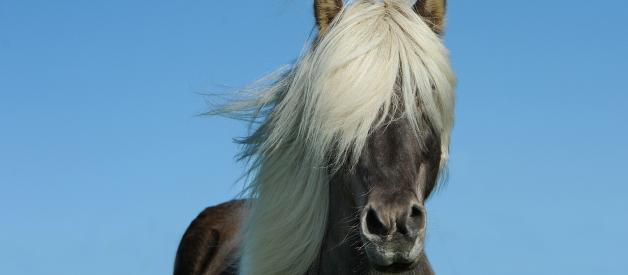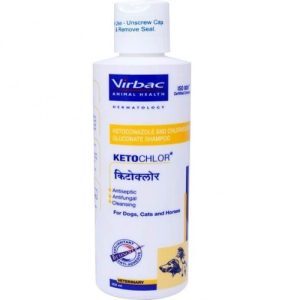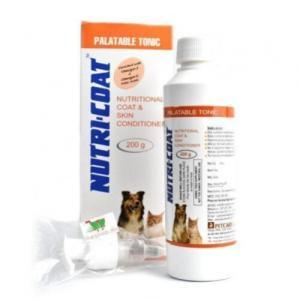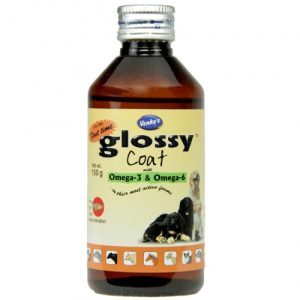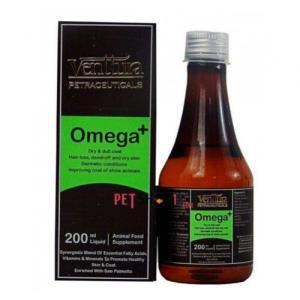Table of Contents
It is important to care about horse hair to maintain its strength and quality, ensuring its longevity and usability in various applications. Proper care helps preserve the natural beauty of long horse hair and extend its lifespan, contributing to this valuable resource’s sustainable and responsible use.

Healthy Horse Hair
Healthy horse hair refers to hair that is in optimal condition and free from any damage, breakage, or disease. It is an indicator of the overall health and well-being of the horse.
A well-balanced diet is crucial in promoting healthy hair growth in horses. Protein, vitamins, minerals, and essential fatty acids are essential for maintaining strong and vibrant hair. Adequate hydration is also important for overall coat health.
Regular grooming helps to keep the horse’s coat and hair clean and free from dirt, debris, and tangles. Brushing or combing the hair stimulates the production of natural oils, which contribute to a healthy shine and provide a protective layer for the hair. Grooming also allows early detection of any abnormalities or issues with the hair or skin.
Maintaining a proper deworming and parasite control program is essential for the horse’s overall health, indirectly impacting its hair quality. Controlling external parasites like lice or mites helps prevent itching, irritation, and horse hair loss treatment.
Horses should have access to shelter or appropriate protection from harsh weather conditions, such as extreme cold, heat, rain, or direct sunlight. Extreme weather conditions can cause hair damage and dryness, leading to a dull and brittle appearance.
Practices that minimize hair damage should be followed, such as using appropriate grooming tools, avoiding excessive pulling or tugging on the hair, and using protective gear (such as fly masks or blankets) to prevent rubbing or hair breakage. Consult a veterinarian if you need horse tail hair treatment.
How to Wash a Horse Hair
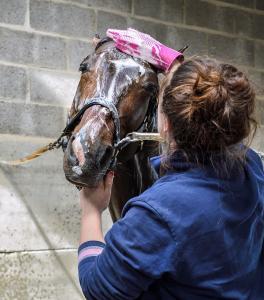
The frequency of bathing a horse can vary depending on individual needs, activities, and environmental factors. Still, generally, it is recommended to bathe a horse every few months or as necessary to maintain cleanliness and skin health.
Washing the Horse
Washing a horse involves several steps to ensure a thorough and effective cleaning. Here’s a general outline of the process and the products commonly used:
- Before beginning the washing process, gather all the necessary supplies, including a hose or bucket for water, equine-specific shampoo, sponge or soft horse hair brush, sweat scraper, and towels.
- Choose a suitable location for washing the horse, such as a wash rack or a flat, well-drained area. Secure the horse properly to prevent accidents or escape.
- Start wetting the horse’s body with water using a hose or bucket. Begin from the neck and gradually move towards the tail, making sure to wet the legs and underbelly thoroughly.
- Dilute the equine shampoo according to the manufacturer’s instructions. Apply the shampoo onto a sponge or soft horse hair brushes and lather it onto the horse’s coat. Work the shampoo into the hair in circular motions, paying attention to areas prone to sweat, dirt, or stains.
- Work your way down the horse’s body from the neck, gently scrubbing the hair to remove dirt, sweat, and grime. Pay attention to the mane, tail, and hard-to-reach areas like the armpits and between the hind legs.
- After thoroughly cleaning the horse’s body, rinse off the shampoo using clean water. Rinse all areas, ensuring no shampoo residue is left behind. Use a hose or buckets of water for rinsing, working from the neck to the tail.
- Once most of the water has been rinsed off, use a sweat scraper to remove excess water from the horse’s coat. Start from the neck and scrape downward, working your way over the body. This helps to speed up the drying process.
- Use towels or clean, absorbent cloths to dry the horse’s body further. Gently rub the hair in the direction of growth to remove excess moisture. Ensure sensitive areas like the face and ears are dried gently and thoroughly.
- After washing, consider applying a horse-specific conditioner or detangler to the mane and tail to keep them soft and tangle-free. Additionally, monitor the horse’s body temperature and provide appropriate protection or shelter if needed.
When washing a horse, using products specifically designed for equine use is best. Regular human shampoos or soaps can be harsh on the horse’s skin and may irritate it. Always follow the manufacturer’s instructions regarding dilution ratios and application methods for equine grooming products.
Lastly, be mindful of the horse’s temperament and comfort during the washing process. Some horses may be sensitive to water or the washing procedure, so it’s important to approach the task calmly and safely, ensuring the horse feels secure throughout the process.
Applying the Conditioner to the Dry Mane and Tail
When choosing a conditioner for dry hair horse treatment, it’s best to select a product specifically formulated for equine use. Look for conditioners designed to nourish and hydrate the hair, leaving it soft, manageable, and tangle-free.
Follow the manufacturer’s instructions for diluting or using the conditioner. Some conditioners may require dilution with water, while others can be applied directly. Before applying the conditioner, make sure the horse’s coat is clean and free from any shampoo residue. Thoroughly rinse off any remaining shampoo and ensure the horse’s hair is damp but not dripping wet.
Start by pouring some conditioner into your hands or onto a sponge. Begin working the conditioner into the horse’s mane, tail, and other areas where conditioning is desired. Gently massage the conditioner into the hair, ensuring even coverage. Use a wide-toothed comb or a suitable brush to distribute the conditioner evenly throughout the hair. This helps to detangle the hair and ensures the conditioner reaches all strands.
Depending on the conditioner’s instructions, you may be advised to let it sit on the horse’s hair for a certain period. This allows the conditioner to penetrate the hair shaft and provide deeper conditioning benefits. Follow the recommended duration, if applicable. Some conditioners may require rinsing, while others may be left in the hair. Refer to the product instructions to determine whether rinsing is necessary. If rinsing is required, use clean water to rinse the conditioner out of the horse’s hair thoroughly.
After applying or rinsing the conditioner, gently towel-dry the horse’s hair using clean, absorbent towels. Pat or squeeze the hair to remove excess moisture, being careful not to tug or pull on the hair.
Remember to choose a conditioner that is suitable for the specific needs of your horse’s hair type and follow the product instructions for the best results. You may ask your veterinarian about how to make horse hair conditioner. Additionally, consider performing a patch test on a small area of the horse’s hair or consulting with a veterinarian or equine grooming professional if you have any concerns or specific requirements for your horse’s hair care.
Use a Brush
When brushing a horse, it’s important to:
- Approach the horse calmly and make sure they are comfortable and relaxed.
- Start with gentle strokes and gradually increase pressure if needed.
- Avoid sensitive areas like the face, ears, and belly.
- Pay attention to the horse’s reactions and adjust your brushing technique accordingly.
- Regularly clean the brushes to remove accumulated hair and debris. For more information, read the product label about how to care for horse hair brushes.
Remember, regular grooming keeps the horse’s coat clean and healthy but also helps strengthen the bond between you and your horse.
When it comes to brushing a horse, several types of brushes are commonly used.
Curry Comb
A curry comb has rubber or plastic bristles and is used in a circular motion to loosen dirt, debris, and dead hair from the horse’s coat. Start at the neck and work your way down the body, using gentle pressure.
Body Brush
A body brush, or dandy brush, has stiff bristles and removes loose hair, dust, and dirt. Brush in the direction of the hair growth, starting from the neck and moving towards the tail. Use long, sweeping strokes.
Soft Brush
A soft brush, also called a finishing or flick brush, has soft bristles and is used for the final touch to remove remaining dust and give the coat a polished look. Brush lightly and in the direction of hair growth.
Mane and Tail Comb
For the mane and tail, use a wide-toothed comb or brush designed specifically for grooming the long hairs. Start at the ends and work your way up, gently untangling any knots or tangles.
Use a Shedding Blade
A shedding blade is useful for removing loose hair, dirt, and debris from a horse’s coat during shedding seasons.
Shedding blades typically have a metal or rubber edge with small teeth. They come in different sizes and styles, so choose one that suits your preference and the needs of your horse’s coat. Opt for a shedding blade that is designed for equine use. Hold the shedding blade firmly with the teeth facing down. Position your hand on the handle, ensuring a secure grip to maintain control during use. Start at the neck and work your way towards the tail, following the direction of the hair growth. Apply moderate pressure and use long, sweeping strokes. Avoid sensitive areas and be cautious around bony or protruding areas. Glide the shedding blade over the horse’s coat in a scraping motion, allowing the teeth to catch and remove loose hair. The blade should easily collect and remove the accumulated hair.
As you use the shedding blade, hair will accumulate on the teeth. Regularly clean the blade by tapping it against a hard surface or using a brush to remove the collected hair and debris. This ensures effective and consistent performance.
Observe your horse’s reactions during the process. Some horses may have sensitive areas, so adjust your pressure or avoid those areas if necessary. Always prioritize the horse’s comfort and well-being.
It’s important to note that shedding blades are specifically designed for use during shedding seasons when horses naturally shed their winter coats. Avoid using shedding blades on sensitive or thin-skinned areas, and be mindful not to apply excessive pressure that could cause discomfort or skin irritation.
Keep Your Horse on a Balanced Diet
A balanced diet for horses involves providing the necessary nutrients in appropriate proportions to support their overall health, well-being, and specific needs.
High-quality forage, such as grass or hay, should form the foundation of a horse’s diet. Forage provides essential fiber, promotes healthy digestion, and helps maintain dental health. The type and quantity of forage can vary depending on the horse’s age, weight, activity level, and health condition.
Concentrates, including grains, pelleted feeds, or complete feeds, are often included in a horse’s diet to provide additional energy, protein, vitamins, and minerals. The amount and type of concentrate should be determined based on the horse’s specific nutritional requirements and workload.
Horses require adequate protein for muscle development, growth, and repair. Protein sources can include legumes (such as alfalfa or clover), soybean meal, or other commercially available protein supplements. The protein content in the diet should meet the horse’s needs based on their age, activity level, and overall health.
Horses require a balanced supply of vitamins and minerals for various physiological functions. These nutrients can be obtained through high-quality forage, concentrates, or specific vitamin and mineral supplements. The requirements depend on the horse’s needs and may vary based on age, reproductive status, and exercise level.
Access to clean, fresh water is essential for a horse’s well-being. Horses should always have free access to water to maintain hydration, support digestion, and regulate body temperature.
Establishing a consistent feeding schedule is important for horses. Feedings should be divided into multiple small meals throughout the day to mimic their natural grazing behavior and aid digestion.
Regularly assess the horse’s body condition score and adjust the diet accordingly. This helps ensure the horse maintains a healthy weight and condition.
It is recommended to work with a qualified equine nutritionist or consult a veterinarian to develop a specific and tailored diet plan for your horse, considering their individual needs, activity level, and any health considerations they may have.
Use Special Products for Horse Hair
Using specialized products for horse hair is important because they are designed to maintain hair and skin health, provide optimal cleaning and conditioning, offer targeted solutions for different hair types, cater to skin sensitivity, and enhance performance and aesthetics.
Ketochlor (Ketoconazole, Chlorohexidine Gluconate), 200 ml Shampoo
Ketochlor, a medicated shampoo from Virbac, is formulated with ketoconazole and chlorhexidine gluconate as its primary ingredients. It is an antifungal, antibacterial, and antiseptic solution to address skin rashes, infections, and itching in dogs, cats, and horses. Ketochlor helps restore the microbial balance of the skin. For optimal results, it is recommended to allow the shampoo to remain on the coat for 5-10 minutes before rinsing off.
Active Ingredients
Ketoconazole and Chlorhexidine Gluconate are active ingredients commonly found in medicated shampoos for animals. Ketoconazole is an antifungal that treats fungal infections, while Chlorhexidine Gluconate is an antibacterial that fights against various bacteria. Together, they provide comprehensive horse hair treatment for skin conditions, reducing itching and inflammation and promoting healing.
Benefits
Does horse hair shampoo really work?
- Ketoconazole effectively treats fungal infections in horses, such as ringworm and yeast infections. It inhibits the growth of fungi and helps alleviate associated symptoms like itching, redness, and irritation.
- Chlorhexidine Gluconate is an effective antibacterial agent against many bacteria commonly found in equine skin infections. It helps control bacterial growth, reducing the risk of secondary infections and promoting healing.
- Combining Ketoconazole and Chlorhexidine Gluconate provides a comprehensive approach to addressing skin conditions in horses. It targets fungal and bacterial pathogens, addressing the underlying causes of infections and improving overall skin health.
- The shampoo helps alleviate itching, redness, inflammation, and discomfort associated with skin infections. By reducing these symptoms, it improves the horse’s well-being and comfort.
- The antifungal and antibacterial properties of Ketoconazole and Chlorhexidine Gluconate aid in healing skin lesions, wounds, and irritated areas. This promotes faster recovery and restoration of the horse’s skin health.
- The shampoo helps restore the natural microbial balance of the horse’s skin, preventing the overgrowth of harmful fungi and bacteria while maintaining a healthy skin environment.
When using shampoo containing Ketoconazole and Chlorhexidine Gluconate, it is important to follow the instructions provided by the manufacturer or veterinarian. This ensures proper application, contact time, and frequency of use for the best results in treating skin conditions in horses. People often ask where I can buy horse hair shampoo. You may buy it at an online pharmacy for vets.
Nutri-Coat (Fatty Acids, Vitamins, Zinc, Selenium, Lecitin), 200g
Nutri-Coat is a horse oil hair treatment. It is a nutritional supplement designed for horses that contains a combination of fatty acids, vitamins, zinc, selenium, and lecithin.
Active Ingredients
- Fatty Acids: Fatty acids, such as Omega-3 and Omega-6, are essential for maintaining healthy skin and promoting a shiny, lustrous coat in horses. They also support immune function and overall well-being.
- Vitamins: Nutri-Coat includes vitamins crucial in various metabolic processes and support the horse’s overall health. Vitamins such as Vitamin E and B are essential for healthy skin, coat, and cellular function.
- Zinc: Zinc is an important mineral for maintaining healthy skin, promoting wound healing, and supporting the immune system in horses.
- Selenium: Selenium is a trace mineral that acts as an antioxidant and is vital for proper muscle function, immune system health, and the maintenance of healthy hair and hooves.
- Lecithin: Lecithin is a phospholipid that supports the health and integrity of cell membranes, promoting healthy skin and coat condition.
Usage
Nutri-Coat is typically fed as a supplement to the horse’s regular diet. It can be mixed with the feed or administered separately. The specific dosage and administration instructions should be followed as recommended by the manufacturer or as advised by a veterinarian.
Benefits
- The combination of fatty acids, vitamins, and minerals in Nutri-Coat supports healthy skin function, helps maintain a shiny and lustrous coat, and reduces issues like dryness, dullness, or skin irritations.
- The vitamins and minerals, including zinc and selenium, help support a strong immune system in horses, helping them better defend against infections and diseases.
- The balanced blend of nutrients in Nutri-Coat contributes to the horse’s overall health and well-being, supporting optimal cellular function, energy metabolism, and nutrient utilization.
- Essential nutrients like zinc and vitamins promote wound healing in horses, helping to speed up the recovery process and reduce scarring.
Glossy Coat (Vitamins, Fatty Acids), 150ml
Glossy Coat is a horse supplement available in a 150ml size. It contains a combination of vitamins and fatty acids specifically formulated to promote a healthy and shiny horse coat.
Active Ingredients
- Vitamins: Glossy Coat contains a blend of vitamins, such as Vitamin A, Vitamin E, and B vitamins. These vitamins play a vital role in promoting healthy skin, supporting cell growth and repair, and improving the overall appearance of the horse’s coat.
- Fatty Acids: The supplement also includes essential fatty acids, including Omega-3 and Omega-6 fatty acids. These fatty acids are important for maintaining the integrity of the skin barrier, promoting healthy hair regrowth treatment for horses, reducing inflammation, and enhancing the coat’s natural shine.
Usage
Glossy Coat is typically administered orally and can be mixed with the horse’s regular feed or given directly into the mouth. The specific dosage and administration instructions should be followed as recommended by the manufacturer or as advised by a veterinarian.
Benefits
- The combination of vitamins and fatty acids in Glossy Coat helps support the development of a healthy and glossy coat in horses. It nourishes the hair follicles, promotes a vibrant color, reduces dryness and brittleness, and enhances overall coat appearance.
- The vitamins and fatty acids in the supplement contribute to maintaining healthy skin in horses. They support skin cell regeneration, improve moisture retention, help alleviate dry or flaky skin issues, and provide horse treatment to help regrow hair.
- The fatty acids present in Glossy Coat play a role in promoting hair growth and strengthening the hair shaft. This can benefit horses with thin or damaged coats, encouraging new, healthy hair growth.
- Glossy Coat’s vitamins contribute to coat health and support the horse’s overall well-being. They play a role in various metabolic processes, cellular function, and immune system health.
Omega Plus (Vitamins, Zinc, Fatty Acids, Inositol), 200ml
Omega Plus is a horse supplement available in a 200ml size. It contains a combination of vitamins, zinc, fatty acids, and inositol.
Active Ingredients
- Vitamins: Omega Plus includes a blend of vitamins, such as Vitamin A, Vitamin D3, and Vitamin E. These vitamins are important in promoting overall health, supporting immune function, and aiding in maintaining healthy skin, coats, and hooves in horses.
- Zinc: Zinc is a mineral essential for various physiological processes in horses. It supports skin and coat health, aids in wound healing, and contributes to the horse’s overall immune function and well-being.
- Fatty Acids: Omega Plus contains essential fatty acids, including Omega-3 and Omega-6 fatty acids. These fatty acids have numerous benefits for horses, including promoting healthy skin and coat, reducing inflammation, supporting joint health, and enhancing overall well-being.
- Inositol: Inositol is a naturally occurring compound that can positively affect horses’ nervous systems and overall metabolic health.
Usage
Omega Plus is typically administered orally and can be mixed with the horse’s regular feed or given directly into the mouth. The specific dosage and administration instructions should be followed as recommended by the manufacturer or as advised by a veterinarian.
Benefits
- The blend of vitamins, zinc, and fatty acids in Omega Plus supports the maintenance of a healthy and shiny coat and the overall health of the horse’s skin. It helps prevent dryness, flakiness, and irritation, promoting a vibrant and lustrous coat.
- The vitamins and zinc in the supplement contribute to a strong immune system in horses, helping defend against infections and diseases.
- Omega Plus provides essential nutrients that support the horse’s overall well-being. Combining vitamins, zinc, fatty acids, and inositol promotes optimal cellular function, energy metabolism, and nervous system health.
- The presence of fatty acids, particularly Omega-3 fatty acids in Omega Plus, can support joint health and help manage inflammation in horses.
The frequency of administration and the duration of use of all these products may vary depending on the specific needs of the horse and the desired results. It is advisable to consult a veterinarian to determine the appropriate dosage, frequency, and duration of supplementation for your horse.
FAQ
Can I Use Products for Horse Hair on Human Hair?
No, using products specifically formulated for horse hair on human hair is not recommended. Horsehair products are designed for the unique needs and characteristics of horse hair, which differ from human hair. Using such products on human hair may not yield desired results and could potentially cause adverse effects.
Do Products for Horse Hair Prevent Hair Loss?
Products for horse hair, such as shampoos, conditioners, and supplements, are generally not specifically designed to provide treatment for horses losing hair. However, maintaining a healthy coat and addressing any underlying health or nutritional issues can indirectly minimize excessive hair loss and helps in hair loss treatment for horses. It’s important to consult with a veterinarian if your horse is experiencing significant hair loss or other hair-related issues and if they need horse-losing hair treatment.
How Often Should I Bathe My Horse?
The frequency of bathing a horse can vary depending on the horse’s lifestyle, activity level, weather conditions, and specific needs. Generally, horses should be bathed every few months to maintain cleanliness and skin health. Overbathing can strip the natural oils from the coat, so it’s important to strike a balance and not bathe excessively unless there is a specific reason to do so.
How to Get Hair to Grow Back on a Horse?
Various factors, including genetics, nutrition, health, and grooming practices, can influence hair growth on a horse. To promote healthy hair growth, ensure your horse receives a balanced diet, including essential nutrients like protein, vitamins, and minerals. Regular grooming, such as brushing and mane/tail care, can also help stimulate hair growth and maintain a healthy coat. If you notice significant or abnormal hair loss, consult a veterinarian to address any underlying issues inhibiting hair regrowth.
Do Horses Have Fur or Hair?
Horses have hair, not fur. The term “fur” typically refers to the dense, short, and soft hair found on mammals like dogs and cats. Horses have longer, coarser, and more durable hair, commonly called “mane” and “tail” hair, which helps protect them from elements like sun, wind, and rain. Horses also have shorter hair covering their bodies, commonly called the “coat,” which can change with seasons and serve various purposes, including insulation and camouflage.

